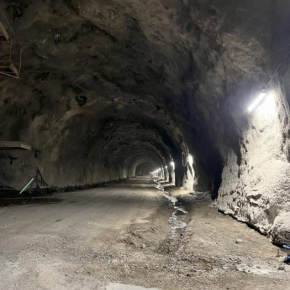African scientists on the road to a first underground physics laboratory with the PAUL project
On the occasion of a symposium held in January 2024 at the University of Stellenbosch, South Africa, a group of international universities and laboratories announced the official launch of the PAUL (Paarl African Underground Laboratory) project. Supported by IN2P3, the project involves the construction of an underground particle physics laboratory beneath the Du Toitskloof Mountains, not far from Cape Town, South Africa. As the first laboratory of its kind to be built on the African continent, PAUL will provide an invaluable opportunity for physics research and teaching in the region.
Like the Laboratoire Souterrain de Modane (LSM) and other underground infrastructures of this kind, the PAUL laboratory will specialize in the study of neutrinos and the search for dark matter particles, taking advantage of the protection offered by the mountain range's thick rock layer. This natural shielding will absorb cosmic rays, minimizing noise and ensuring the efficiency of the laboratory's detection equipment. In addition, the PAUL laboratory will be of interest to a range of scientific fields beyond particle physics, such as radiobiology, geophysics and engineering.
Now that the project has been launched, initial feasibility studies will be carried out in the coming months, with a view to excavating the 10 000 m3 structure in five to ten years' time. IN2P3, a partner institute, is involved in the project through the funding of an international research network, IRN PAULINE (Paarl Africa Underground Laboratory International NEtworking).
For further information
University of Stellbosch's press release, published on Eurekalert.
